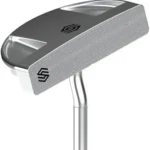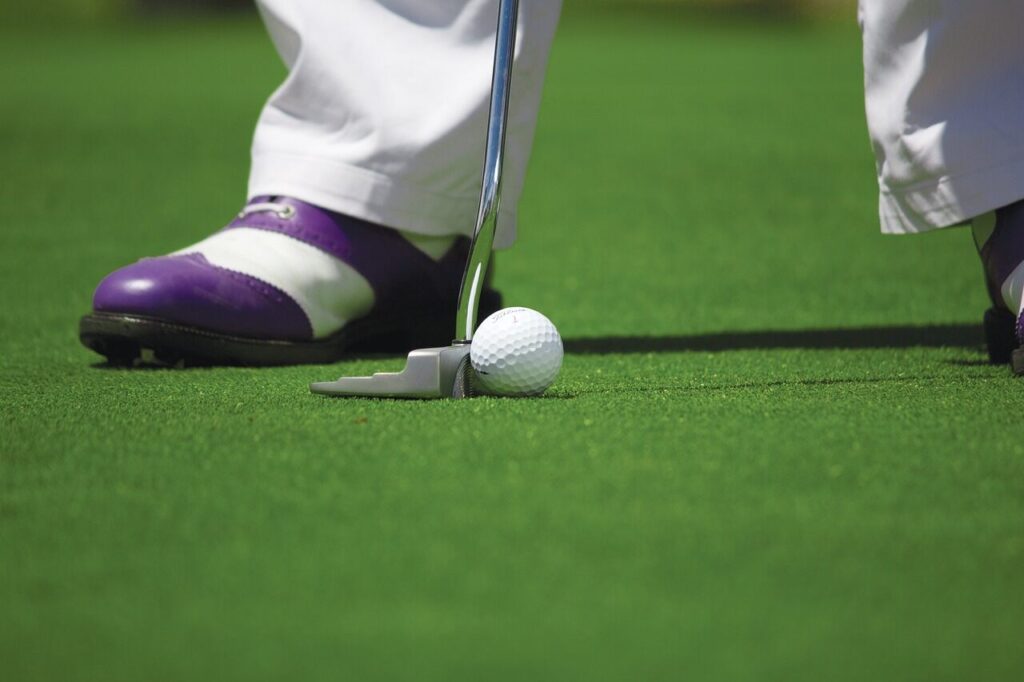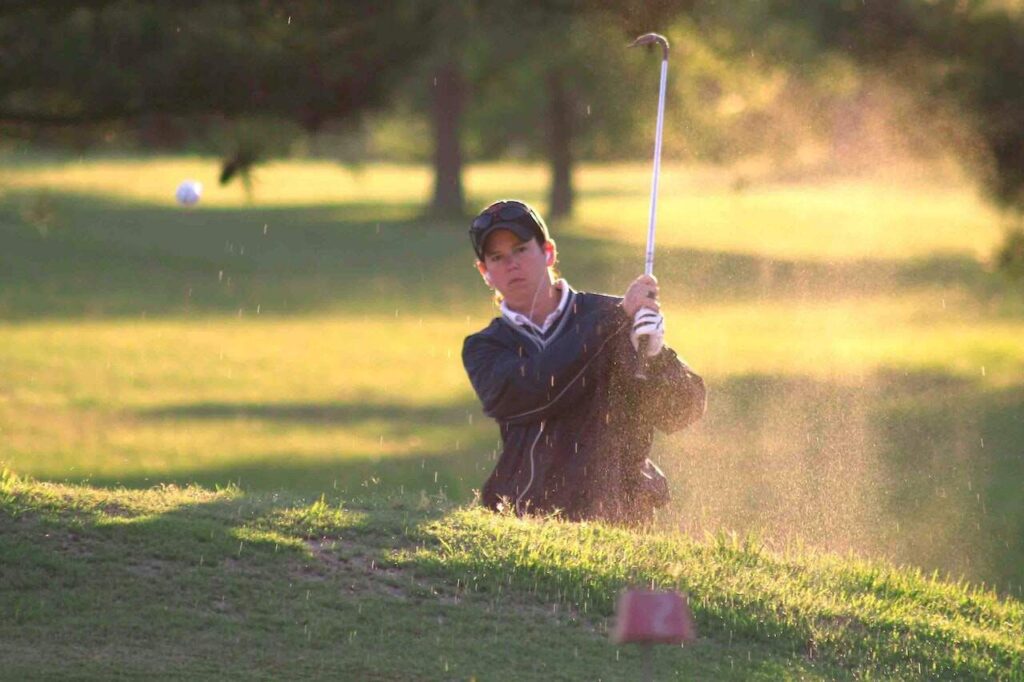This blog will explore 7 essential putting techniques in Golf that can help you drain more putts and lower your handicap. It doesn’t matter whether you are a weekend warrior or a budding pro; these golf putting tips will offer your desired distinction, while also answering your question: how to improve your putting?
While playing golf, your performance on the green can make or break your scorecard. No matter how powerful or accurate your long shots are, it’s often the putts that determine whether you will walk away empty-handed or with a double bogey. That’s why mastering your putting game is absolutely crucial.
Want to polish your skills so you keep adding trophies to your shelf?
These 7 essential putting techniques in Golf are what every golfer needs to know.
7 Essential Putting Techniques in Golf
Table of Contents
Did you know ?
The “Golf Glossary from A to Z ” is here. Check it out! Download available as flipbook and pdf. 159 Golf Terms on your fingertips. Click here.
Hark, fellow linksmen, for the hallowed grounds of golf whisper tales as ancient as the Scottish Highlands themselves! To truly unlock the secrets of this captivating sport, one must first master its peculiar tongue, for the golf course is not merely a patch of manicured grass, but a verdant lexicon where every swale and sand trap speaks volumes. Dive in, and let’s unravel the delightfully perplexing jargon that transforms a simple stroll with clubs into a grand, strategic conversation with the course itself. Click here to download!

Perfect Your Golf Putting Grip
A strong basis starts with a perfect putting grip. Many similar players struggle in this area simply because their grip lacks comfort or the stability element. Unlike full swings, your putting should decrease your wrist motion and encourage a pendulum-like stroke
Famous putting grips include:
- Traditional – The Reverse Overlap Grip
- Left-hand Low – The Cross-Handed Grip
- A Popular Grip On Tour – The Claw Grip .
- You can experiment with these unless you find the putting grip that works naturally in your case. A stable grip serves as the key to consistent putts.
Master the Golf Putting Setup and Alignment
Remember to dial in your setup; everything should be in its assigned place before you move on to hit a putt. The better the setup, the more it offers you consistent execution, which is the secret ingredient to getting in maximum putts
Primary Setup Elements
- Your eyes should be directly over the ball
- Keep feet and shoulders a width apart
- Make sure that the ball is placed slightly forward in the stance
- Put your face square to the target line
Apart from these key elements, one of the best golf putting tips that even professionals suggest is using alignment aids. It is either on the ball, the putter, or even using a putting mirror to see yourself playing. In this way, the entire arrangement is on point every time.
Control Your Distance With a Pendulum Stroke
Many newbies lose strokes due to poor distance control, not bad reads. Hence, embracing a smooth, pendulum-like motion is the answer to your question of how to improve your putting.
Consider your shoulders as the core engine of the stroke, instead of your hands or wrists. The backstroke and follow-through should be equal in length, maintaining a smooth momentum. Practice putting in different distances with the same tempo, and only stick to adjusting the length of your stroke.
To develop a great putting technique, adhere to these 7 essential putting techniques in Golf.
Furthermore, count “1-2” as you stroke the ball to make putting easier for yourself. “1” for the backstroke, “2” for the follow-through. This is a good way for your tempo to remain smooth and repeatable.
Golf: Read the Green Like a Pro
You must learn to read greens, which is viewed as one of golfers’ most underappreciated putting techniques. Just don’t misread the break, because despite having perfect mechanics, the ball will drop; therefore, be careful:
How To Read Greens Better?
- Walk around the sport, where your putt is, and view it from behind the hole and your ball.
- Search for the high point or slopes in the green.
- Pay attention to observing the direction of the grain of the grass. Look for shine or darkness.
- Visualize the path your ball should take to reach the hole.
- With time, you will improve at reading greens, but you must practice regularly.
Practice 3-Foot Golf Putt Drill
Each of these 7 essential putting techniques in Golf is crucial for improving your performance on the green.
The 3-foot putt drill is one of the seven putting techniques a golfer should include. Short putts may seem like a breeze, but when you are a part of a serious game, they can be missed due to pressure.

Try This Drill:
- Take five balls and place them around the hole in a circle, each one should be about three feet away.
- Make all five in a row.
- As you feel you are gaining confidence, gradually increase the distance.
- When you consistently practice short putts, it builds muscle memory and trains you to become mentally focused. The drill is a great confidence booster for you when you experience tough putts.
- Learning and applying these 7 essential putting techniques in Golf is vital for every player.
Putting in Golf: Stay Mentally Composed
As you read on, keep in mind the importance of the 7 essential putting techniques in Golf.
You must stay mentally composed because, as much as it is a physical game, it requires your mental energy too. Stay mentally composed, block negative thoughts, tension, or overthinking. All these can impact your gaming and make even the best technique zero. You wouldn’t want that to happen in your situation, right? Hence, relax.
Mental Tips For Better Golf Putting
- Imagine the putt before proceeding ahead.
- Remind yourself to be calm and that you can do this.
- Remain committed to the line and stroke.
- Whatever the outcome is, accept it. Don’t carry missed putts to the next hole.
- Last, stay confident, as that will only bring you success. The more composed and focused you are, the greater your chances of achieving your putts.
Golf Putting: Use the Right Gear
Please select the right outer style. Be it a blade or mallet, face-balanced or toe-hang, it can affect your putting stroke. If you don’t have the right gear, visit a well-reputed golf store and purchase one yourself.
Conclusion
Don’t forget these 7 essential putting techniques in Golf during your practice sessions.
To master the green, you must master these 7 putting techniques for golfers, and after that, you will feel the difference in striking shots. Apart from this, if you want to learn more golfing tips, subscribe to Golf Inquirer, and you will enter an exciting world of golf. Don’t underestimate the value of the 7 essential putting techniques in Golf.
FAQ’s
What is the difference between a blade putter and a mallet putter?

A blade putter is a traditional, thin-headed putter with a smaller sweet spot, often preferred by skilled players who have a consistent putting stroke. A mallet putter has a larger, more forgiving head, which helps with alignment and provides more stability on off-center hits. Many mallet putters have unique shapes and markings to help players line up their putts more effectively. The choice between the two is a matter of personal preference and what feels most comfortable and effective for a player.
What is the most important factor in putting: line or pace?

While both are crucial, most golf instructors agree that pace is the most important factor. The “line” is the direction you hit the ball, and the “pace” is the speed at which you hit it. The reason pace is prioritized is that it directly dictates how much the ball will break. A putt hit with the correct pace will follow the intended line and drop into the hole, even if the line is slightly off. If a putt hit on the perfect line but with the wrong pace it will miss the hole every time. Good pace control allows for a wider margin of error on the line.
What is the purpose of the alignment lines on a putter head?

The lines or markings on a putter head, often called “alignment aids,” are there to help a golfer correctly aim the putter face at their intended target. By lining up the putter’s mark with the ball and the target line, a golfer can feel more confident that they are aiming properly before they take their stroke. Many players also use the line on their golf ball in conjunction with the putter’s alignment marks to create a unified visual aid that points directly to the hole.
How do you approach a downhill putt?
Downhill putts are particularly challenging because they tend to be faster and break more than uphill or flat putts. The key to a successful downhill putt is to use a very light and controlled stroke, focusing on barely touching the ball to get it started on its path. A common mistake is to hit the ball too hard, which causes it to miss the hole and run far past. The goal is to let the slope and gravity do the work. The ball should have just enough speed to get to the hole’s edge, allowing the break to take full effect.



